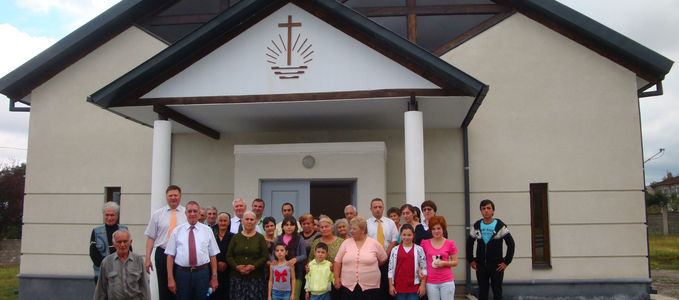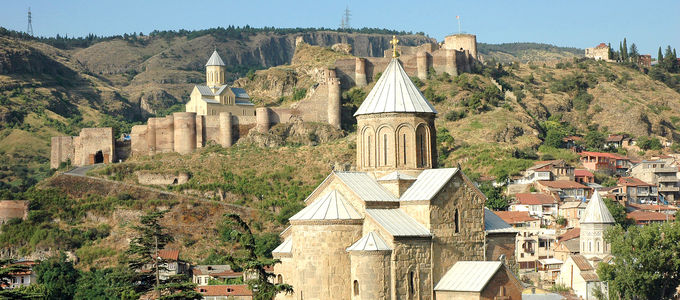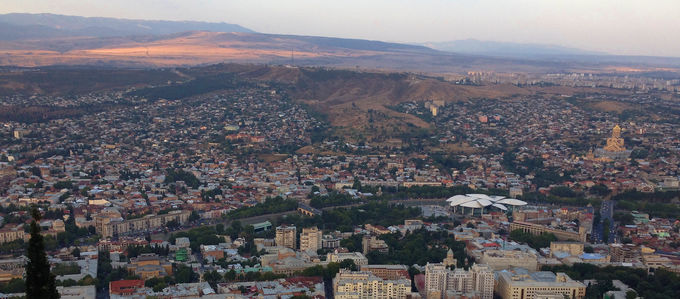
Yesterday, in the wee hours of the morning at 3.35 a.m., Chief Apostle Jean-Luc Schneider landed at the international airport in Yerevan, the national capital of Armenia. Over the weekend, he will visit ministers and members in Armenia and Georgia, its neighbour to the north.
He is accompanied by Apostle Semion Cazacu from Moldova, as well as District Apostle Rainer Storck and the Apostles Wilhelm Hoyer, Franz-Wilhelm Otten, Walter Schorr, and Wolfgang Schug from Germany (District Church North Rhine-Westphalia). The Chief Apostle will spend the weekend in the Armenian cities of Yerevan and Vanadzor, and has planned a quick visit to Tbilisi in Georgia.
Armenia and its rugged mountains
The republic of Armenia is a landlocked country in Transcaucasia, just south of the great mountain range of the Caucasus. Of the three million people that live in this mountainous region between Georgia, Azerbaijan, Iran, and Turkey, one million alone live in the national capital, Yerevan. Ninety per cent of the country lies 1,000 metres above sea level. The country’s highest point is Mount Aragats at 4,090 metres, an extinct volcano. Because of the great difference in altitude, the country’s climatic variation is considerable. In the mountains it is moderately cold, in the valleys the climate is continental: noon-day temperatures at this time of the year reach about 27 degrees Celsius.
The New Apostolic Church in Armenia
Armenia was the first country in the world to adopt Christianity as its state religion around the year 301. Christianity is still deeply rooted in the people. Ninety-four percent of Armenians are members of the Armenian Apostolic Church.
In 1991 Apostle Bernd Klippert managed to make the first contacts in Armenia. The first congregations were established that same year still, and Apostle Alfred Kusserow ordained a Deacon, Rafael Movsesian. Today he is the country’s Bishop. In 1997 the New Apostolic Church was officially registered in Armenia. The congregations in the country are cared for from Germany by the New Apostolic Church North Rhine-Westphalia. Statistics show that the membership in Armenia is 1,379, spread over nine congregations. Each congregation has its own premises. The people are cared for by a Bishop, a District Evangelist, a Shepherd, two Evangelists, three Priests, and seven Deacons. Many of the brothers and sisters, however, have had to leave their country and seek employment abroad in order to secure their family’s livelihood.
Georgia, the “balcony of Europe”
Georgia on the eastern end of the Black Sea is bounded by Armenia in the south. About 25 per cent of the Georgia’s 3.7 million people live in Tbilisi, the national capital. The Georgians refer to their country as the “balcony of Europe”. Nearly 90 per cent of the country is mountainous, the highest peak being Mount Shkhara at 5,068 metres.
The New Apostolic Church in Georgia
Georgia is predominantly Christian. Most people practice Orthodox Christianity, most in the Georgian Orthodox Church.
Just like in Armenia, the first contacts in Georgia by ministers of the New Apostolic Church were made in 1991, at the time of the country’s declaration of independence. At first, ministers from the German District Church Saxony/Thuringia worked in Georgia, before the responsibility passed to North Rhine-Westphalia in 1993. Today the New Apostolic Church in Georgia has 1,103 members. They gather in nine congregations and are cared for by 16 ministers.
Divine services in Armenia and Georgia
At one o’clock on Saturday afternoon, Chief Apostle Schneider will celebrate a divine service in the cultural centre in Vanadzor for all brothers and sisters from Armenia. On Sunday afternoon, the Chief Apostle will conduct a divine service for the New Apostolic Christians from Georgia and Azerbaijan. The return trip to Switzerland and Germany—for the Apostles—is planned for Monday morning.




























